The Rolex 'King Midas' touch: Why the world's richest are going all-in on yellow gold watches
Everyone from Elvis Presley to classic Bond villains have rocked them, but for today's most discerning watch collectors, gold is boldly back.
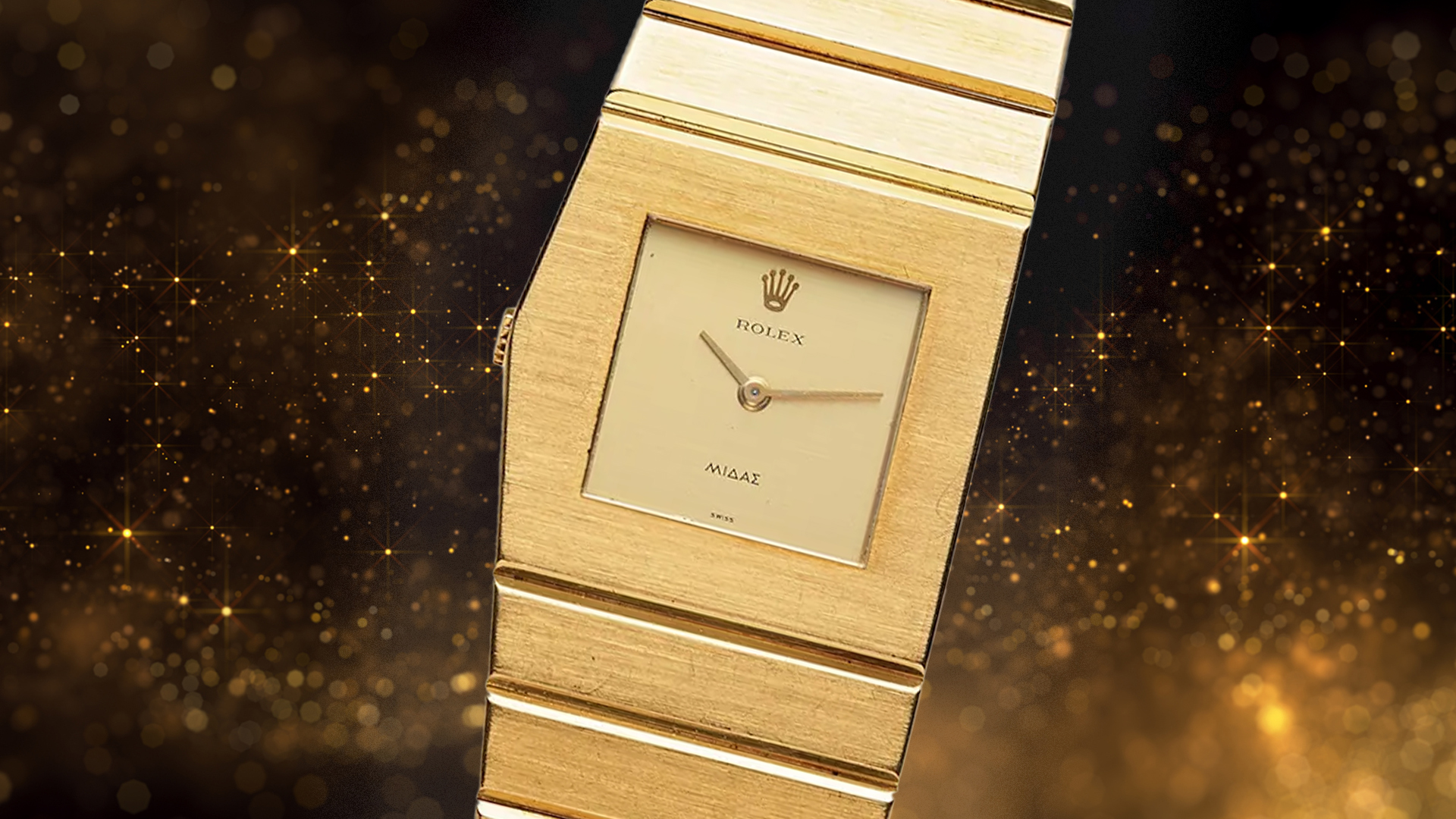
“You see this watch? You see this watch I’m wearing?” asks the cocksure salesman, played by Alec Baldwin, of his underlings in David Mamet’s film Glengarry Glen Ross. “This watch costs more than your car”. It’s a Rolex Oyster Perpetual Day-Date.
Critical to the brag, however, is that it’s in yellow gold.
Cinema provides plenty of examples of the gold watch as archetypical symbol of having arrived. Michael Douglas wears a gold Cartier Santos as Gordon Gekko in Wall Street. The gold watch is even used a totem of the growing wealth of stockbroker Jordan Belfort as played by Leonardo DiCaprio, as he progresses through the story of The Wolf of Wall Street: from steel Seiko Solar to gold-plated Tag Heuer Series 1000 to solid gold Tag Heuer Series 2000.
And yet it’s a gold watch - a big, shiny, fake one - that Del Boy also dons in Only Fools and Horses.
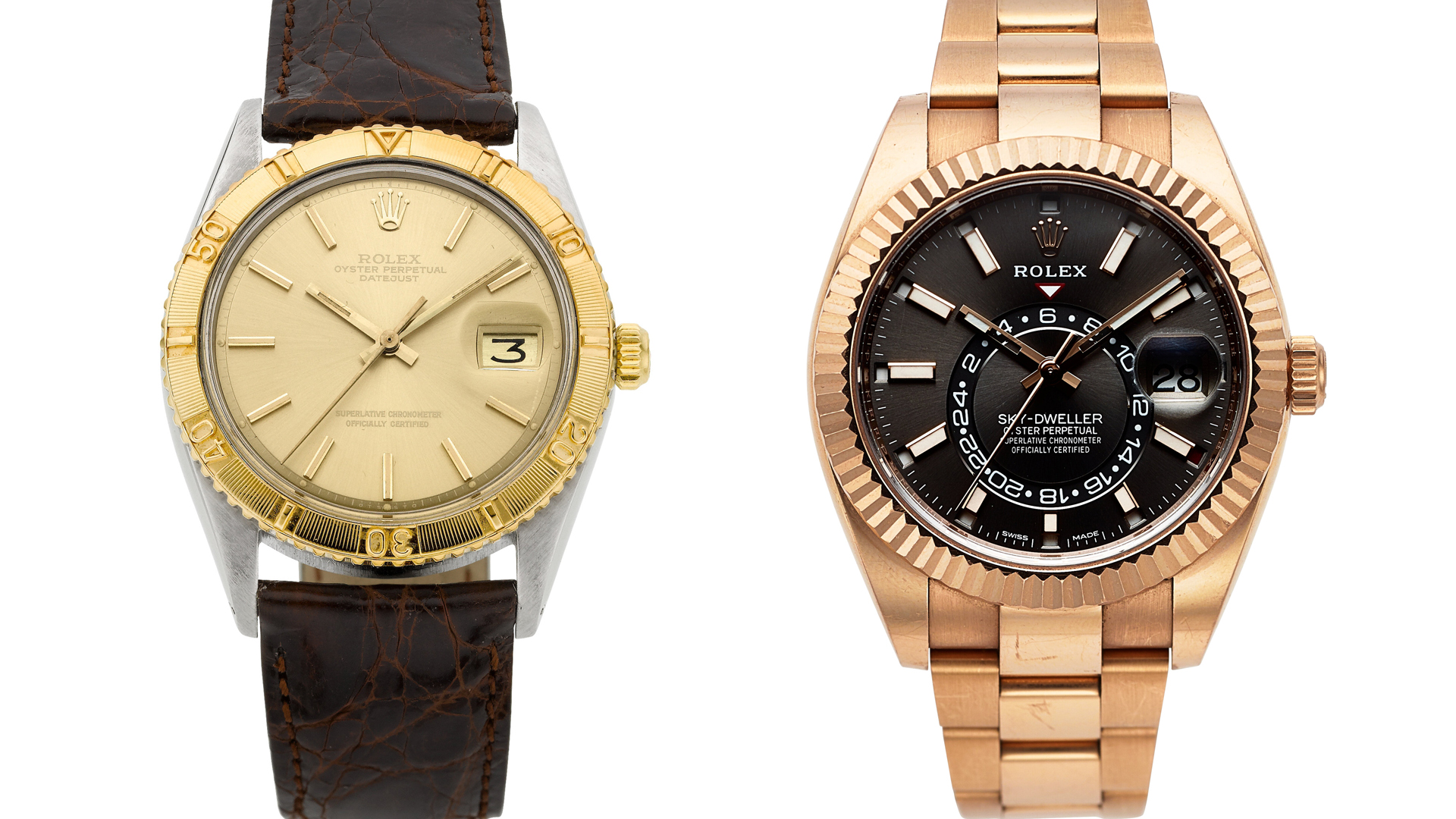
Left — A Rolex Steel & Gold Datejust with Thunderbird Bezel. Right — A Rose Gold Rolex Sky Dweller.
And that’s the problem with the gold watch - and especially one in yellow gold, rather than more subtle red, rose or pink golds: it is simultaneously classic and flashy, timeless and yet of questionable taste, shiny but maybe also suspect.
Landmark timepieces
The gold watch has traditionally been given for landmark birthdays, or on retirement - a tradition said to have been started by Pepsi Co. in the 1940s - or to mark a special achievement. Einstein, for example, was given a yellow gold Longines by the Zionist convention in Los Angeles in 1931. Every new US President is been sent a gold Date-Just, a tradition that started when Rolex sent one to soon-to-be President Dwight Eisenhower in 1951.
But the gold watch has also been the go-to choice of someone who wants to tell you how much money they have.
Get exclusive shortlists, celebrity interviews and the best deals on the products you care about, straight to your inbox.
That connection between wrist candy and flexing can be attributed to a few things. In the 1960s a style revolution saw men dress more casually - the watch consequently became more important as a signifier of wealth, and nothing did that faster and more obviously that a watch in yellow gold.
And then, early in the same decade, Rolex effectively reinvented the idea of the gold watch by creating one that was so obscenely golden, it broke that historic association between the metal and marking an important moment in one’s lifetime. Instead it just said: ‘Here’s a big lump of gold. I have it on my wrist. You don’t’.
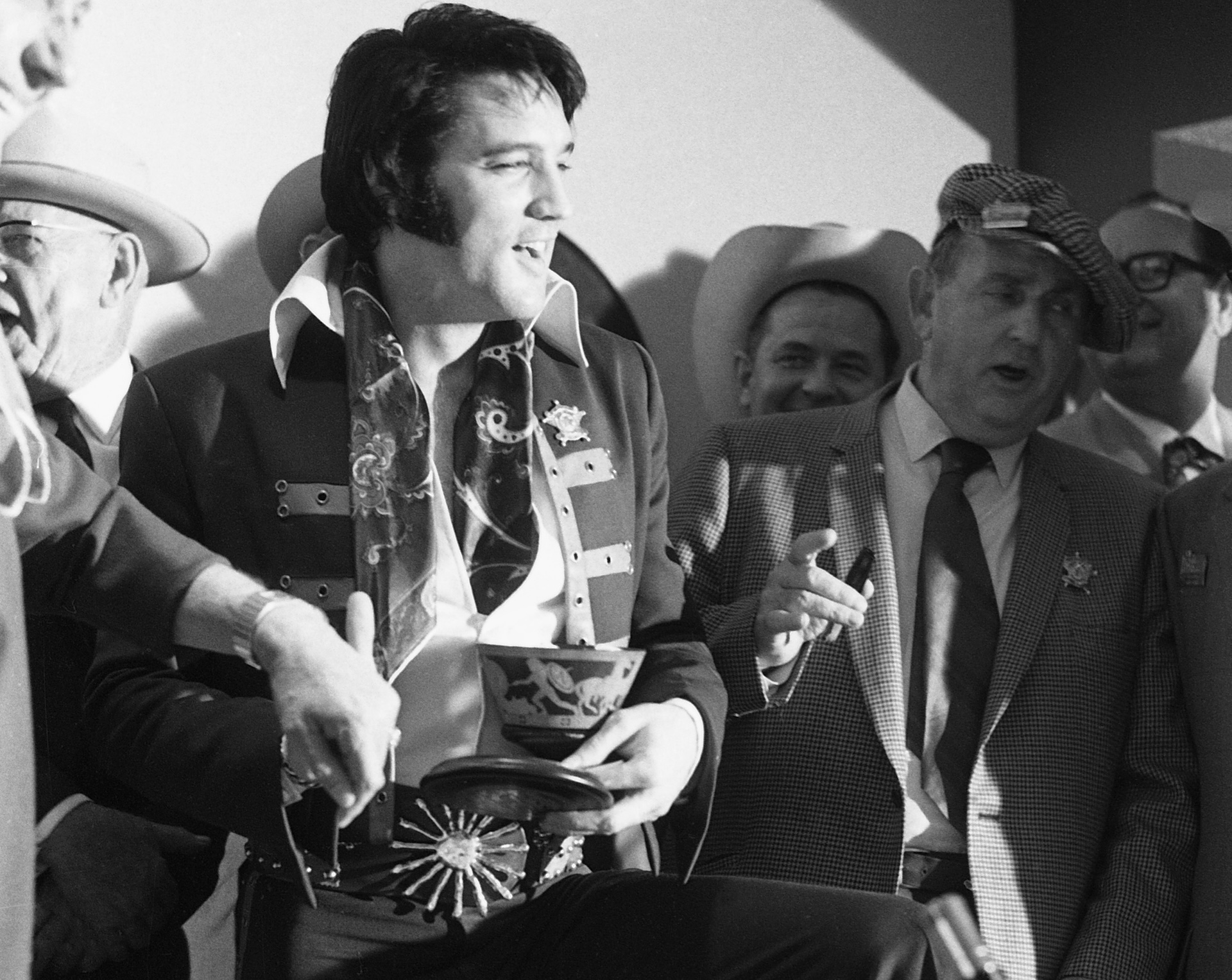
Elvis Presley here is presented with a limited edition Rolex King Midas watch in a special presentation case shaped like an ancient Greek vase, for his run of concerts at the Houston Astrodome Livestock Show and Rodeo in Texas, 1st March 1970.
Not for nothing was the watch, designed by the esteemed watch designer Gerald Genta, called the King Midas - named after the mythical Greek king, cursed so that everything he touched turned to gold (be careful what you wish for). At the time it was the heaviest solid gold watch ever made. Naturally Elvis Presley wore one, but also John Wayne. The villain Scaramanga in The Man With the Golden Gun was also The Man With the Golden Watch - a King Midas.
Circumstances only reinforced Rolex’s proposition that statement gold was top boss. The subsequent two decades would see a steady rise in gold prices - peaking throughout the “greed is good” era of the 1980s - arguably creating the template for the gold watch as a status symbol which has remained more or less dominant ever since.
The step up from steel
Now, with gold prices not just at a record high, but at an all-time high - as high-rollers seek to move their money out of the less secure assets - perhaps this is more than ever the case. In fact, because the precious metal is especially precious, there’s only a few watchmakers with access to the special processes required to work with gold precisely - to absolutely minimise wastage, which literally means hoovering up the gold dust - and the capital to buy the gold in the first place.
“Making a model in gold is above all a matter of finance - you need to have the money up front, the millions you need for the funds of gold required, and that’s a barrier to entry to making a watch in gold for many brands,” explains Edouard Meylan, the CEO of watch brand H. Moser & Cie.
“You’re taking a bet not just on the success of the model you’re making in gold, but on the future value of the gold itself too”.
50 years ago a solid gold Rolex Submariner would cost you eight times the steel equivalent. Now it’s just four.
Some watchmakers - like the independent maker Gronefeld - refuse to use yellow gold because it’s too show-offy. But that hasn’t stopped a number of watch brands recently pushing yellow gold back to the top: Chopard, Vacheron Constantin, Fears, Nomos Glashutte, Breitling, Longines, Piaget and Rolex of course, all have made big splashes with gold.
And, with steel sports watches now commanding record high prices too - that, to repeat, is watches made of a commonplace alloy - watch fans are starting to think, ‘heck, may as well go the extra and buy a gold watch’, knowing that the metal alone means the timepiece will likely increase in value.
Remarkably, 50 years ago a solid gold Rolex Submariner would cost you eight times the steel equivalent. Now it’s just four.
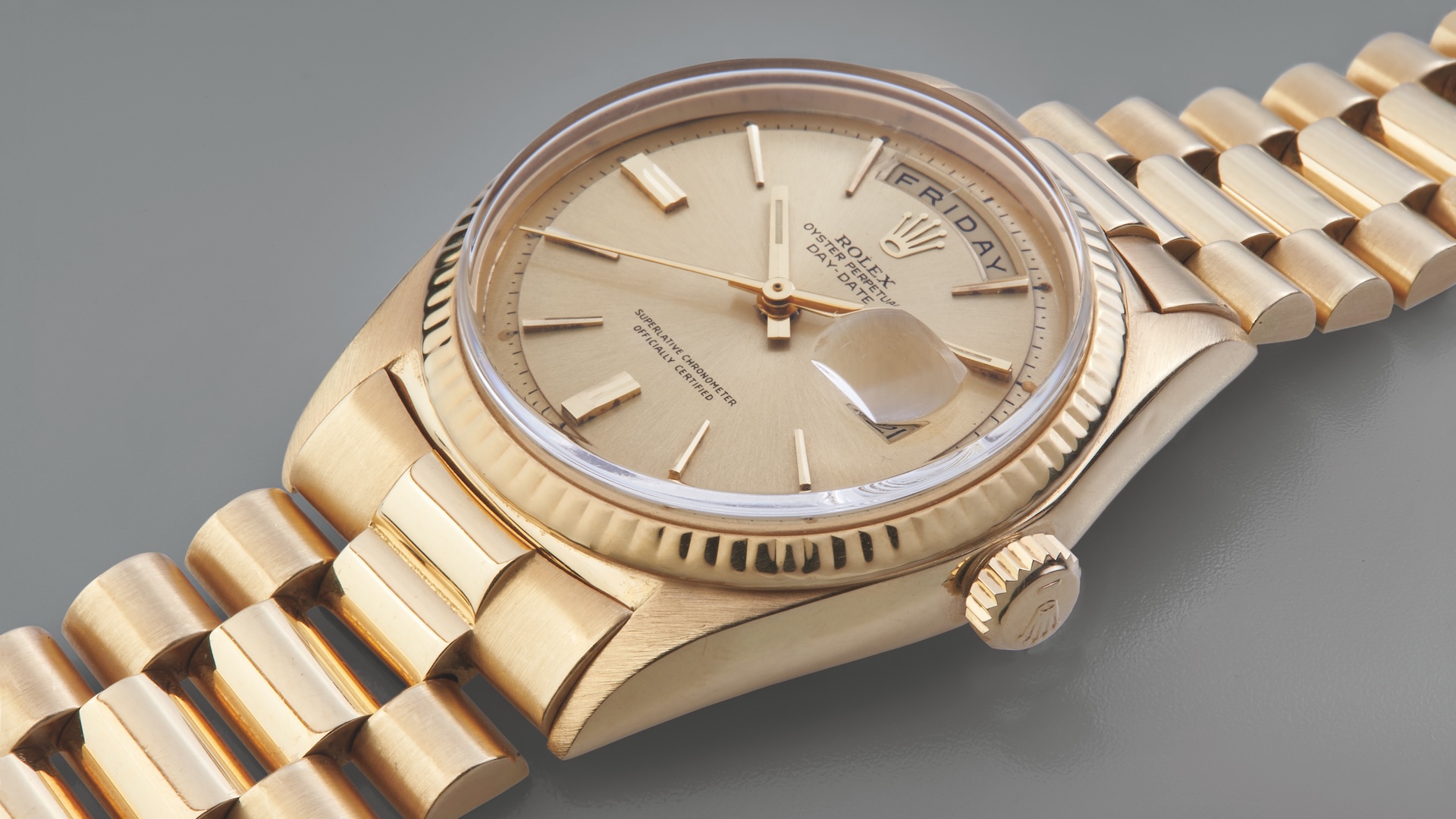
As George Bamford, of Bamford Watches, puts it, we’ve had years of rose gold - and that has proven a kind of gateway drug for a return of its gaudier cousin.
“But other than that it's very hard to explain gold’s allure,” he says - it’s just something you feel rather than think.
“For all of the status-signalling, it is a remarkably expressive material, in its play with light, in its various shades, its weight and softness - such that I think even scratches enhance its appeal”.
All that hints at another road in watchmaking to make gold even more special - and that’s to develop your own kind of even more exclusive gold.
Omega, A. Lange & Sohne, Chanel, Hublot and Rolex are all watchmakers that have either developed a signature colour of gold - a touch more red or more honey-coloured than is usual, for example - or their own proprietary techno-gold, promising the desirable look but made scratch-proof or colour-stabilised. It’s gold but a 21st century version.
To bring such advances about, Rolex even has its own gold furnace. Now that’s commitment to the yellow stuff.

Josh Sims is a freelance writer and editor based in the U.K. He’s a contributor to The Times (London), Esquire, Robb Report, Vogue and The South China Morning Post, among other publications. He has written on everything from space travel to financial bubbles, and art forgery to the pivotal role of donkeys in the making of civilisation.
A former editor of British style magazines Arena Homme Plus and The Face, Sims is also the author of several books on style including the best-selling Icons of Men’s Style. He’s married and has two boys. His household is too damn loud.
You must confirm your public display name before commenting
Please logout and then login again, you will then be prompted to enter your display name.
-
 London’s happiest boroughs have officially been revealed - and there are spots on both sides of the river, for once
London’s happiest boroughs have officially been revealed - and there are spots on both sides of the river, for onceReally puts the Rich in Richmond
-
 Dyson V16 Piston Animal with Submarine review: Doing chores shouldn’t be this much fun
Dyson V16 Piston Animal with Submarine review: Doing chores shouldn’t be this much funWith great vacuuming and wet cleaning performance, Dyson’s latest flagship is easy to recommend. Oh, and did we mention it has a green light beam thing?
-
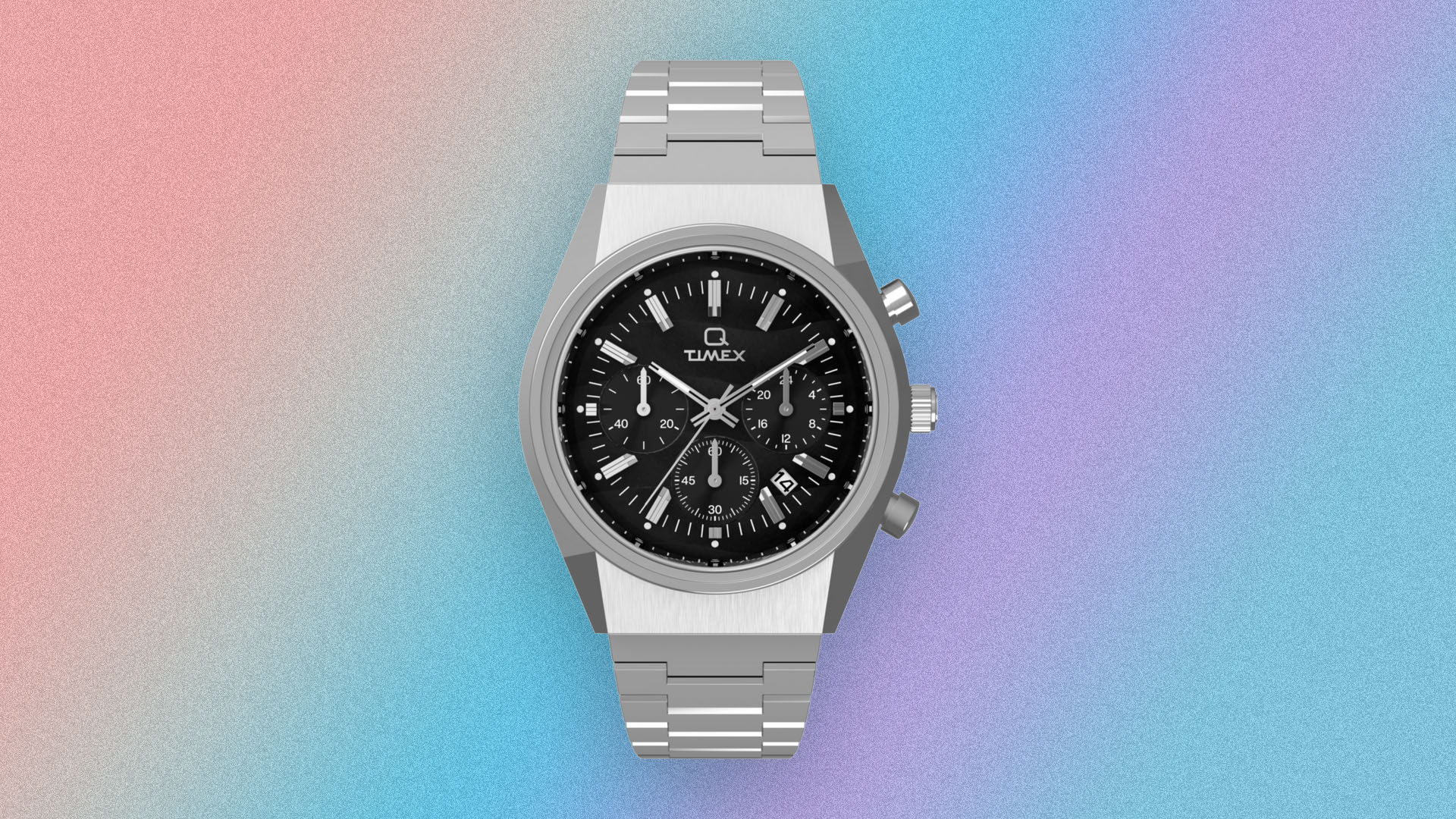 Timex drops two eye-catching retro revival watches for the mid-price buyer
Timex drops two eye-catching retro revival watches for the mid-price buyerClass without sky-high cost
-
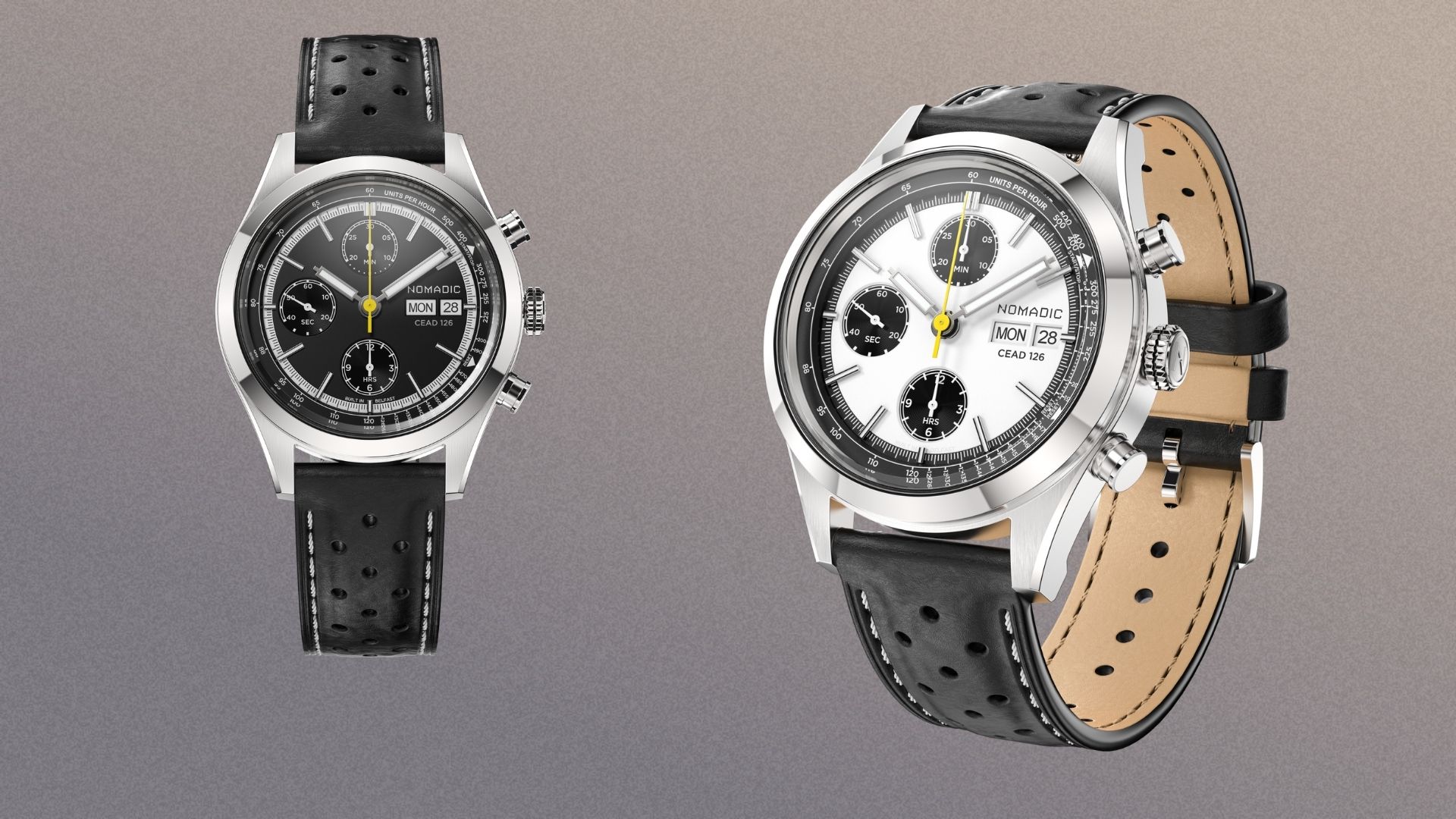 Nomadic Watches shifts gears with its first-ever chronograph: The Céad 126
Nomadic Watches shifts gears with its first-ever chronograph: The Céad 126Three more classics from Nomadic
-
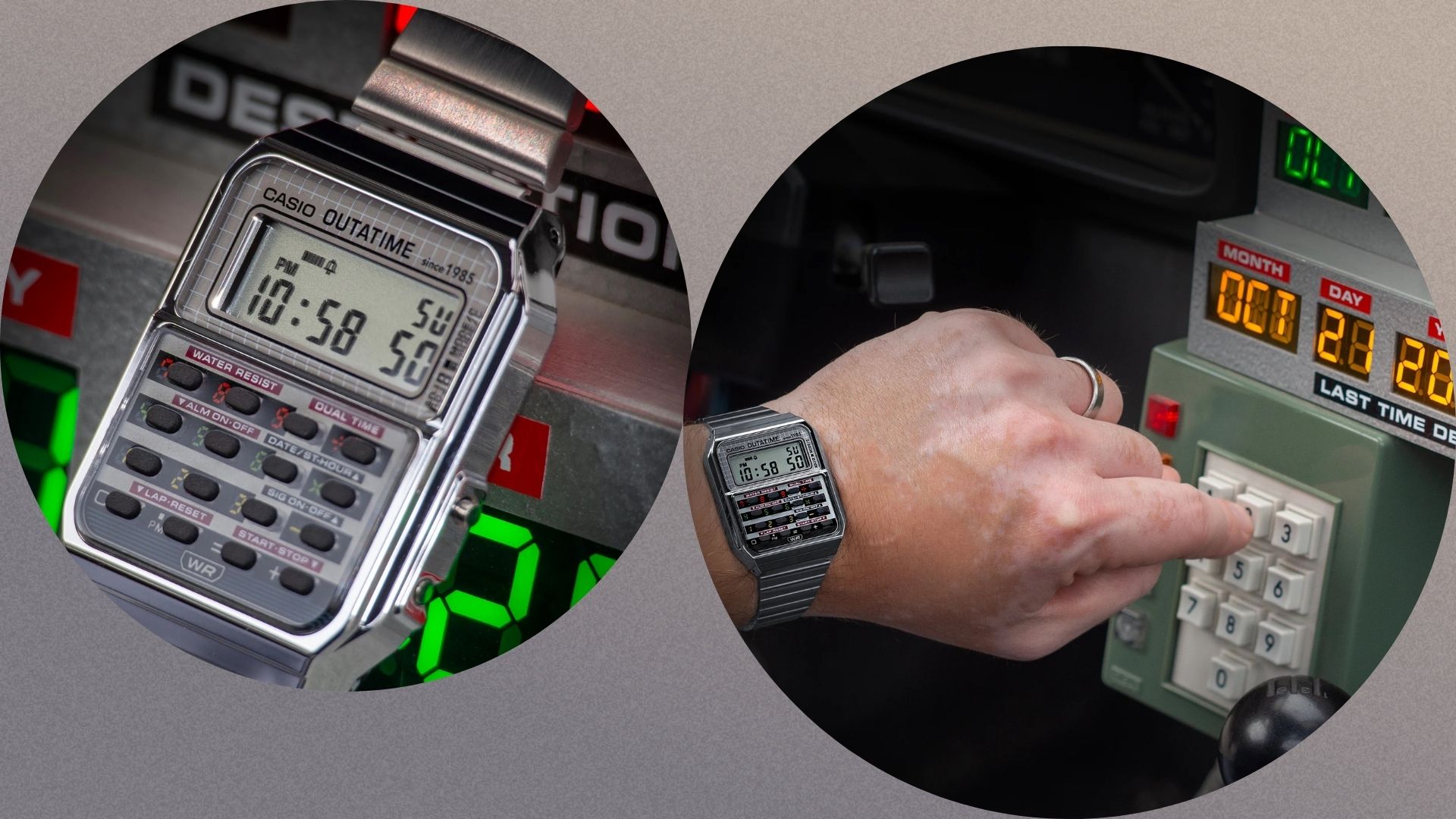 Casio travels back in time for a Back to the Future 40th anniversary watch
Casio travels back in time for a Back to the Future 40th anniversary watchWhere we're going, we don't need dedicated handheld calculators!
-
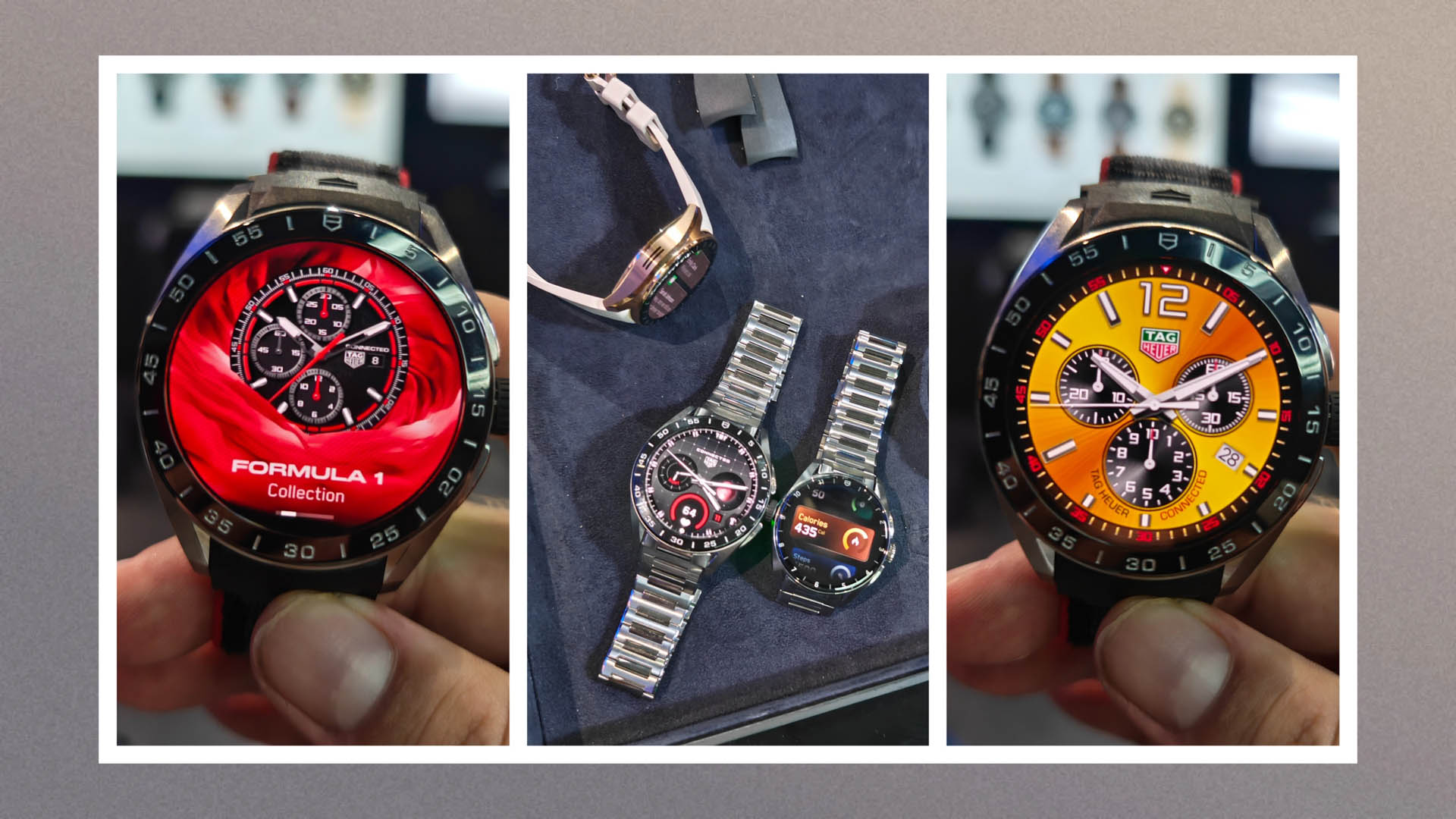 I tried the new TAG Heuer Connected Calibre E5 — one big change makes a huge difference
I tried the new TAG Heuer Connected Calibre E5 — one big change makes a huge differenceTAG's latest Connected watch has just been revealed...
-
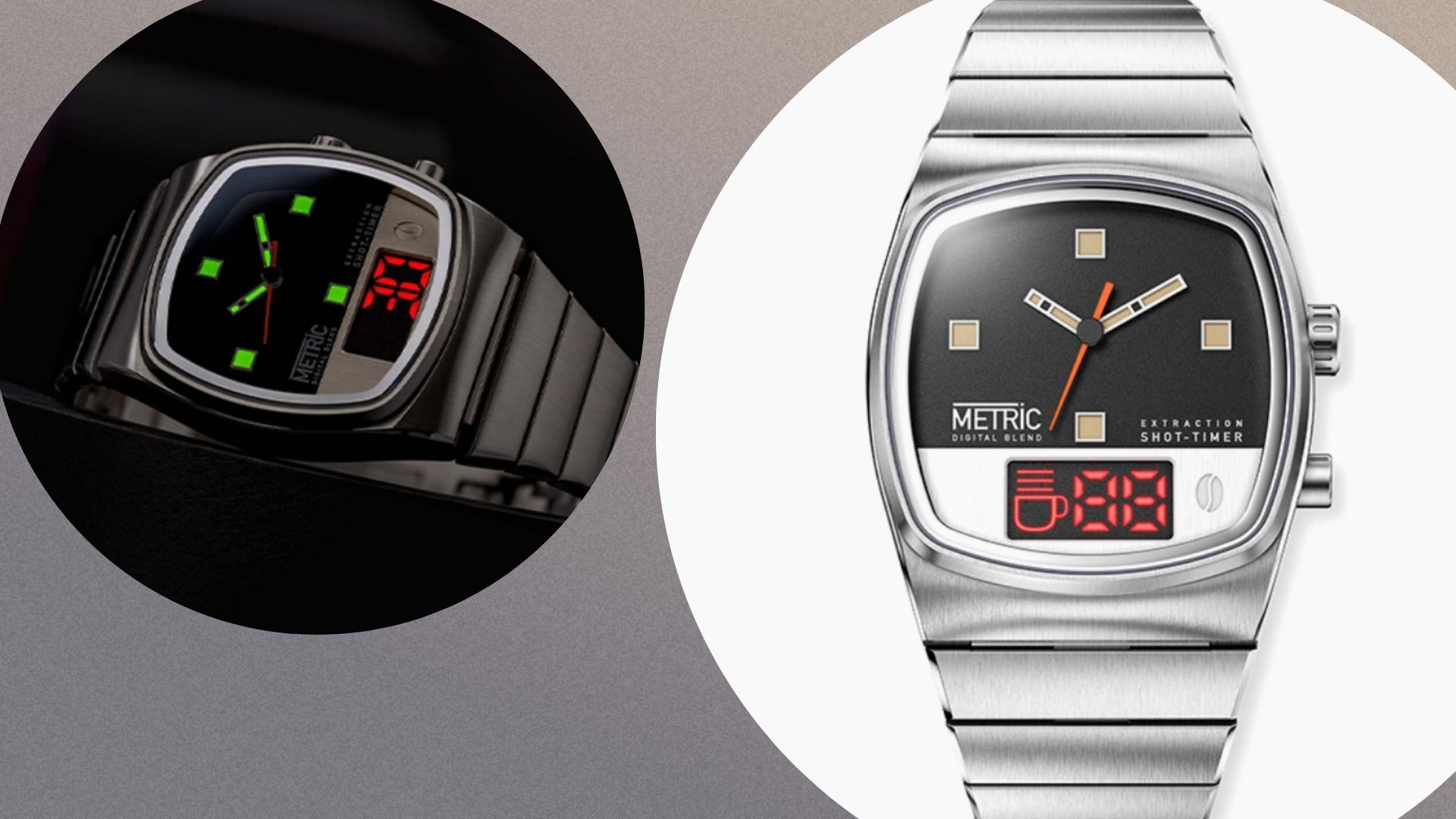 Time for a brew? This wristwatch with an espresso timer is the perfect timepiece for coffee lovers
Time for a brew? This wristwatch with an espresso timer is the perfect timepiece for coffee loversCoffee o’clock
-
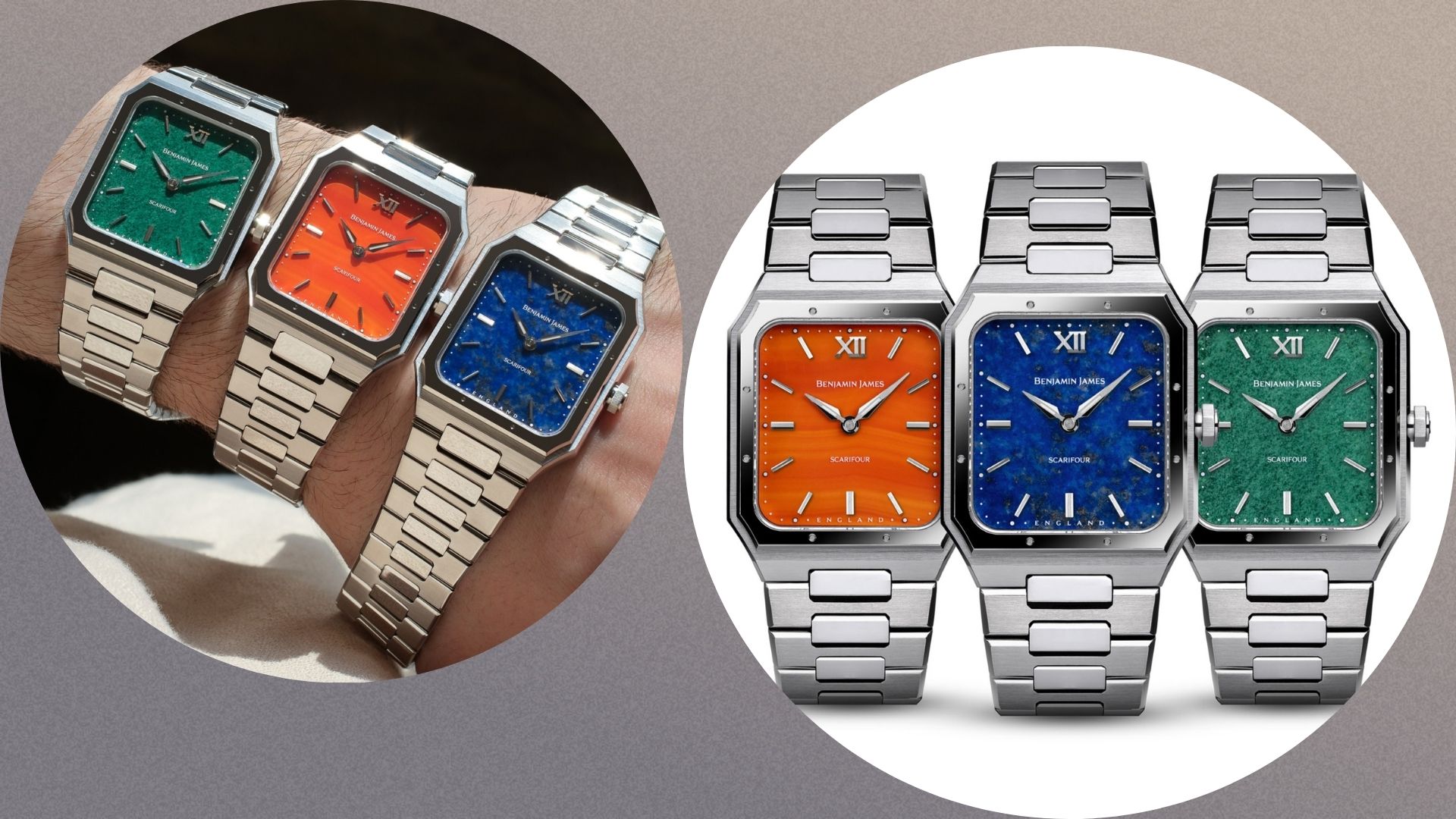 Benjamin James Scarifour collection expands with stunning stone dials
Benjamin James Scarifour collection expands with stunning stone dialsThree killer additions to the Scarifour line
-
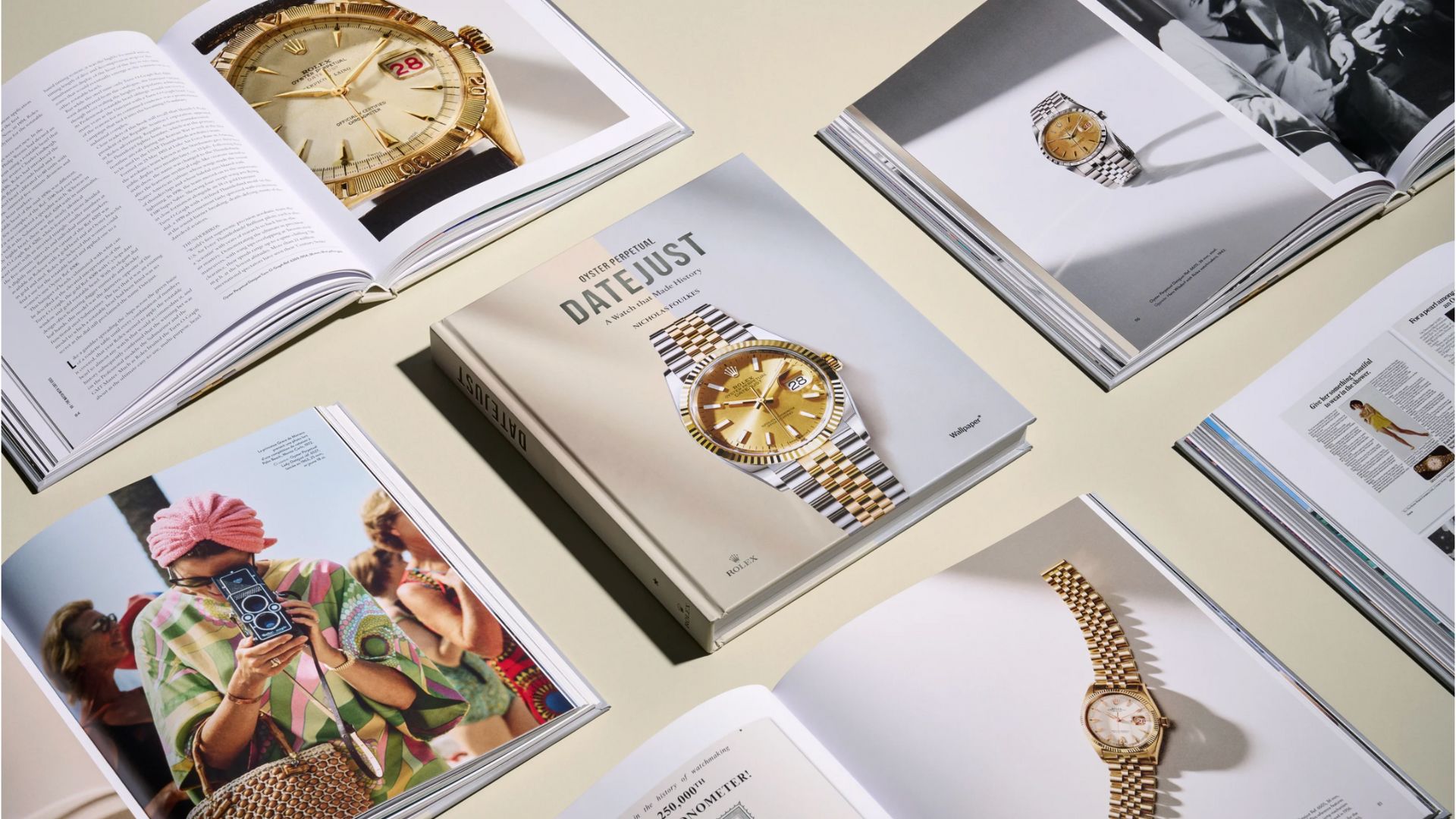 Rolex's classic Oyster Perpetual Datejust is celebrated in new commemorative official book
Rolex's classic Oyster Perpetual Datejust is celebrated in new commemorative official bookPuts your old Beano annual to shame
-
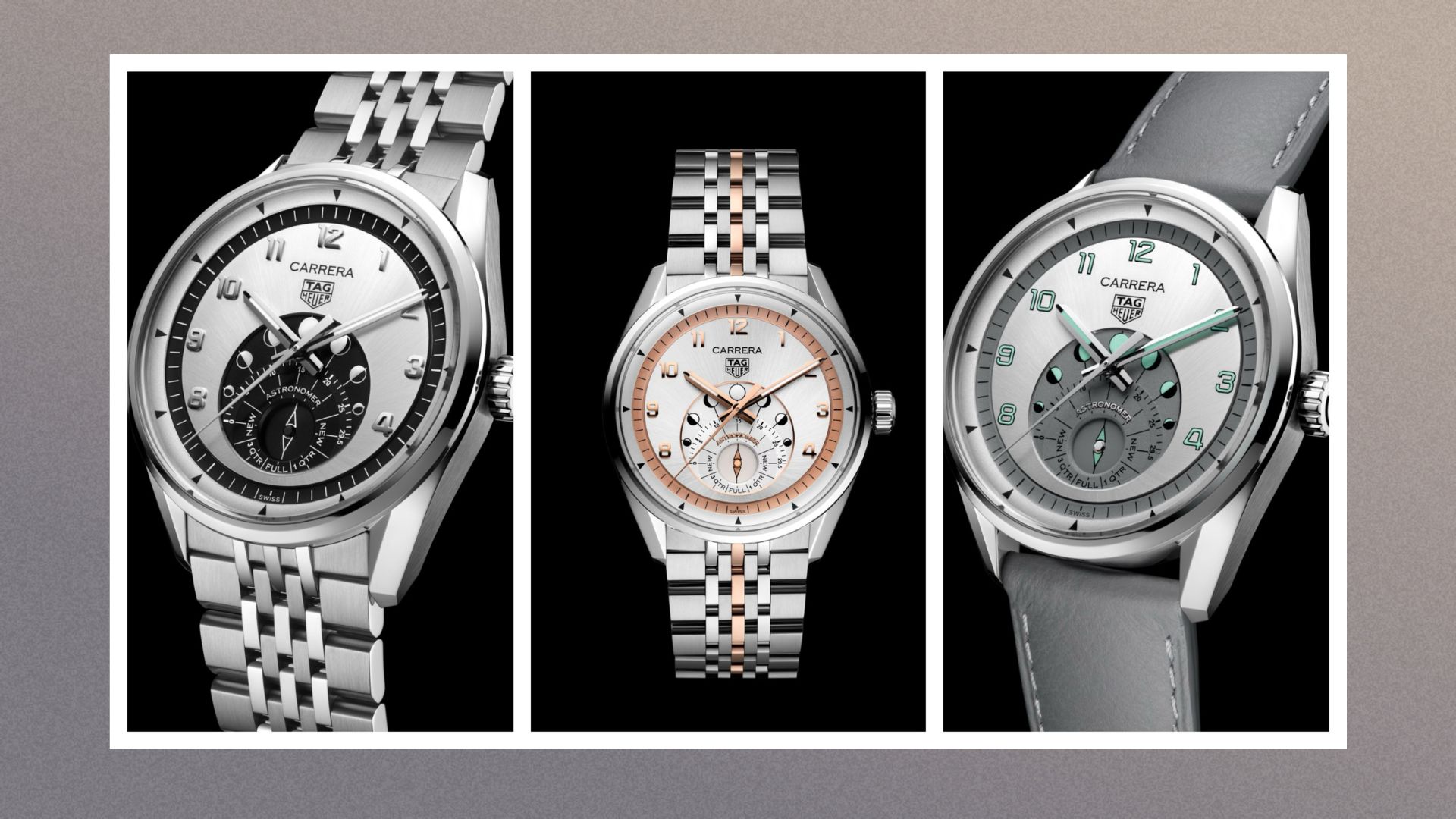 TAG Heuer looks to the moon with the Carrera Astronomer
TAG Heuer looks to the moon with the Carrera AstronomerA different rhythm
